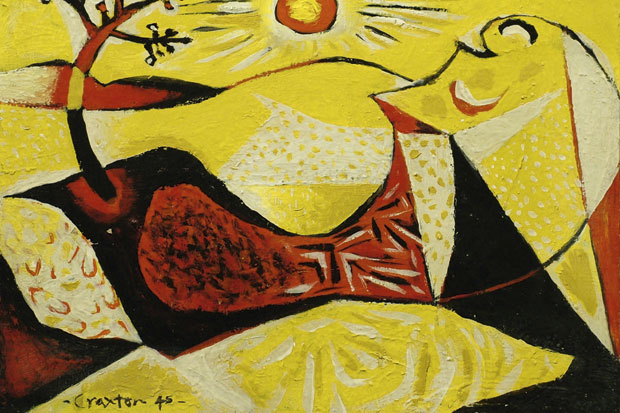It is often said of John Craxton (1922–2009) that he knew how to live well and considered this more important than art. Perhaps there is a certain truth in this, but if he really believed it, did he have any business in being an artist? And an artist he undoubtedly was, by temperament and sensibility, as well as by the rich endowment of natural talent. Of course, letting it be known that you think life more important than art is a very good cover for that most debilitating (and paradoxically productive) of besetting fears: self-doubt. Craxton had it in large measure, and it is probably this quality that accounted both for his originality and for the painter’s block he periodically suffered. With his wide-ranging knowledge and eclectic eye, he could easily have made work that was more pastiche than personal, but his best pictures transcend the echoes of El Greco and Byzantine art, of Picasso’s Cubism and the sinuous surrealism of Miró. In fact, his finest paintings lead the viewer into a visionary universe of colour and light and bounding structures, whose taut rhythms release a feeling of euphoria in the beholder and beguile the imagination with intimations of visual splendour.
Craxton, though outwardly modest and even inclined to be self-deprecating (in wonderful contrast to the brash self-promotion of today’s art stars), nevertheless knew the worth and seriousness of his own achievement. And it is, after all, the work that lives on after the artist, whatever fond memories may all-too-briefly exist in the minds of his friends and intimates. So an exhibition — such as the one currently at the Fitzwilliam — which purports to offer a representative selection of his life’s work needs to be examined with great care by anyone interested in 20th-century British art. For we need to determine just how prominent a place Craxton should occupy in the history of the period.







Comments
Join the debate for just £1 a month
Be part of the conversation with other Spectator readers by getting your first three months for £3.
UNLOCK ACCESS Just £1 a monthAlready a subscriber? Log in